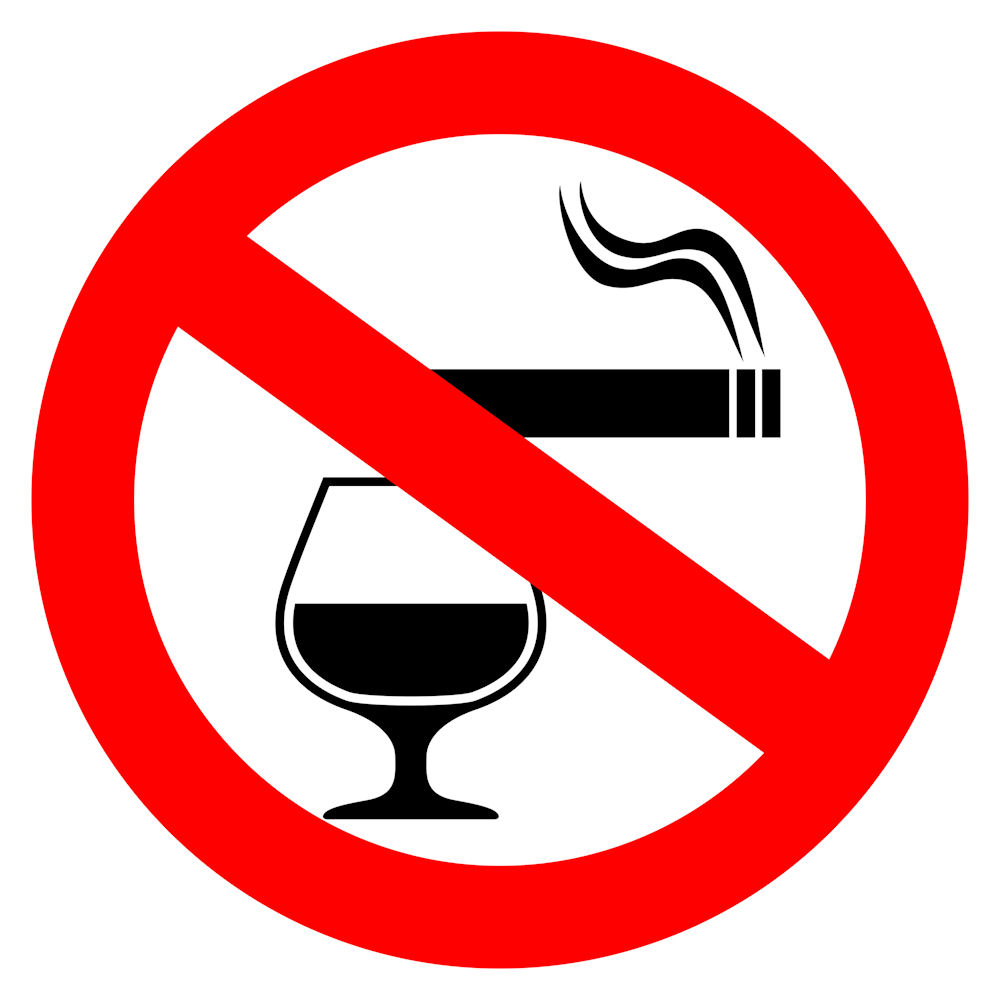Drinking and smoking remain the leading causes of preventable disease, disability, and death in the US, responsible for at least one in every five, or more than 480,000 deaths every year. In 2020 alone, at least 13 out of every 100 American adults aged 18 years or older are known to currently smoke cigarettes. This statistic translates into an estimated 30.8 million adults in the US that currently smoke cigarettes. To make matters worse, more than 16 million Americans are known to have a smoking-related disease.
Statistics relevant to alcohol abuse are just as alarming as well. Data from the National Center for Drug Abuse Statistics (NCDAS) indicate that every day, 385 Americans die as a result of excessive alcohol use. 83.9% of these deaths involve adults aged 35 or older. Alcohol is also known to cause at least 10% of all deaths among 15 to 49-year-olds, and 13.5% of all deaths among 20 to 39-year-olds. The most outstanding bit of information from the NCDAS points out that at least 140,557 Americans die from alcohol-related causes in an average year, and that one in every ten Americans aged 12 and above already has an alcohol use disorder.
What are the Side Effects of Cigarette Smoking?

Smoking has been scientifically proven to cause cancer, heart disease, stroke, lung diseases, diabetes, and chronic obstructive pulmonary disease (COPD), and this condition in turn leads to emphysema and chronic bronchitis. Smoking also increases the risk of tuberculosis, certain eye diseases, and problems of the immune system, including rheumatoid arthritis.
Even non-smokers who are chronically exposed to secondhand smoke are not spared from the damaging side effects. Exposure to secondhand smoke contributes to at least 41,000 deaths among non-smoking adults and 400 deaths in infants each year. Secondhand smoke has been medically proven to cause strokes, lung cancer, and coronary heart disease in adults. Children who chronically inhale secondhand smoke are at increased risk for sudden infant death syndrome, acute respiratory infections, middle ear disease, severe asthma, and slowed lung growth.
To make matters worse, there is no known safe level of exposure to secondhand smoke, as non-smokers who are exposed to secondhand smoke, even for a short time, can suffer a multitude of harmful health effects. There isn’t even a waiting period for the effects of secondhand smoke, as secondhand smoke exposure can produce harmful inflammatory and respiratory effects within 60 minutes of exposure, and this could last for at least three hours after exposure.
What are the Side Effects of Drinking Alcohol?
Alcohol has always been a part of human culture for as far back as ancient history. It is ever present in social events, celebrations, and even gatherings that are not necessarily festive, such as funerals. This is one of the main reasons, apart from brand marketing, why so many people are still convinced to this day that the benefits of alcohol far outweigh the highly damaging side effects that it brings to binge drinkers. Many will even encourage others to imbibe a quantity of alcohol for health reasons each day, although all of these claims have long been debunked by medical professionals and the patients getting treatment in an alcoholism rehab.
Many will even argue that the key to managing the damaging effects of alcohol is moderate drinking. This claim, however, is dangerously inaccurate as there are far too many factors involved in determining what amount constitutes the “moderate” quantity for different people. Another factor that invalidates the safety of moderate drinking is that moderation entails control, and it is a known medical fact that alcohol is a habit-forming substance, meaning control is an impossibility in most cases since addiction following chronic alcohol drinking is a certainty.
To highlight the highly damaging side effects of alcohol, the risks, and physical effects are outlined as follows:
Short-Term Health Risks
Alcohol is a substance where the user does not even need to wait for a long time to experience just how damaging it could be. Alcohol use has immediate effects that only increase with the quantity of alcohol already imbibed. These include:
- Injuries (motor vehicle crashes, accidental falls, drownings, and burns
- Violence (altercations leading to homicide, suicide attempts, sexual assault, and physical abuse)
- Alcohol poisoning (medical emergency resulting from elevated blood alcohol toxicity)
- Increased risk-taking (unprotected sex or sex with multiple partners leading to unintended pregnancy or sexually transmitted diseases)
- Miscarriage and stillbirth or fetal alcohol spectrum disorders (FASDs)
Some effects would appear over time in instances where the person does not experience any debilitating effects and continues binge drinking.
Long-Term Health Risks
- Hypertension
- Arrhythmia (irregular heart rate)
- Cardiovascular disease
- Stroke
- Liver disease
- Digestive issues
- Various cancers (breast, mouth, throat, esophagus, voice box, liver, colon, and rectum)
- Impaired immune system
- Osteoporosis
- Gout
- Learning impairment
- Compromised memory
- Dementia
- Depression
- Anxiety
While the effects of alcohol are generally body-wide, certain organs are known to incur more damage than others. These include:
Brain
Alcohol is a central nervous system depressant, and as such, it interferes with the brain’s ability to communicate with the rest of the body. A brain that succumbs to the depressant effect of alcohol will experience a disruption in how the neural communication pathways function. These disruptions could result in changes in mood and behavior, make thinking increasingly difficult, and impair the body’s coordination. Our drug rehab in Idaho can help you quit drinking and smoking before it’s too late.
Heart
There is documented medical proof that chronic drinking could lead to alcohol-induced cardiomyopathy, which is a condition where parts of the heart stretch too much and enlarge. This stretching and enlarging weaken the heart, preventing it from pumping as well as it should. Over time, this reduces the body’s available oxygen supply, and all organs suffer greatly with minimized oxygen distribution. Other alcohol-induced conditions include:
- Arrhythmia (irregular heartbeat)
- Stroke
- Hypertension (high blood pressure)
Liver
Perhaps more than the heart, binge drinking is far more known to cause alcohol-related liver disease (ARLD) which is the progressive damage done to the liver by chronic alcohol intake. Alcohol is toxic, and it is the job of the liver to filter out all toxins that enter the body. In the case of binge drinking, however, the liver could only take so much before the sheer amount of toxic content from alcohol begins to overwhelm it and cause damage.
ARLD has three stages which inevitably come about if the person does not stop with the chronic alcohol intake. These stages are:
Alcoholic Fatty Liver Disease
Binge drinking is known to cause the build-up of fats in the liver. This build-up is called alcoholic fatty liver disease, also known as steatosis. The liver normally contains a small amount of fat on its own, but the continued intake of alcohol is known to increase this fat by up to 5% or even 10% of the liver’s weight. This increase will cause the liver to become inflamed over time, and inflammation is known to damage the tissues of the inflamed area.
Eventually, the inflammation causes scar tissue to form over the damaged areas of the liver. This formation of scar tissue is called fibrosis, and will eventually lead to a condition known as cirrhosis.
Alcoholic Hepatitis
Some medical professionals believe that the next stage of ARLD is alcoholic hepatitis, although there is an ongoing debate about this claim a sequence. This is because not all heavy drinkers have been known to develop alcoholic hepatitis. There is research that even suggests that the disease could also occur in people who drink only moderately.
Alcoholic hepatitis is inflammation of the liver caused by drinking alcohol. The danger of alcoholic hepatitis stems from the fact that it is progressive and could quickly lead to liver failure and death if the person does not immediately stop consuming alcohol. Another danger, which has a higher risk than liver failure, is malnutrition. People who suffer from alcoholic hepatitis are known to experience a severe loss of appetite, preventing them from eating properly. They require treatment such as adventure therapy or group therapy for alcohol abuse to help them stop drinking alcohol.
Alcoholic hepatitis is most likely to occur in people who drink heavily over many years. However, the relationship between drinking and alcoholic hepatitis is complex.
Cirrhosis
The third stage of ARLD is cirrhosis where the liver has become significantly scarred. The scar tissue that formed from the inflammation caused by the alcoholic fatty liver disease has now replaced most of the healthy tissues of the liver. This lessening of healthy tissues means lessened liver performance as well.
The danger of cirrhosis is that it is irreversible. The damaged tissue will not regenerate, and the scar tissue will remain in place, although immediately stopping alcohol intake is known to prevent further damage and significantly increase life expectancy.
A person who has alcohol-related cirrhosis and doesn’t stop drinking has less than a 50% chance of living for at least 5 more years. This is because continued alcohol intake despite having cirrhosis is certain to lead to liver failure and death.
Learn to Curb Your Smoking and Drinking Urges at Eagle Creek Ranch
It is never easy to quit a habit, which is why people say that old habits die hard. The problem with this is that some old habits are very damaging, and could even become life-threatening some day, such as smoking and drinking.
We understand this here at our detox center in Idaho at Eagle Creek in Nampa, ID. We’ve helped a lot of people get over their bad habits, just as we could help you with yours. Contact us today.

Clinical Director
Kendall Maloof is the clinical director at Eagle Creek Ranch Recovery. She is a licensed marriage and family therapist and has held multiple leadership roles before settling here at Eagle Creek. Kendall received her master’s degree in marriage and family therapy from the Chicago School of Professional Psychology in 2016. Her career in mental and behavioral health began in 2014 when she took up internships in both the nonprofit and for profit sectors. She interned at multiple reputable companies, such as The Living Success Center and 449 Recovery in California.
In 2019, Kendall became the clinical director of Sunsets Recovery for Woman, a dual diagnosis program in southern California. Kendall is a natural leader. She has an incredible ability to problem solve and stay calm in any situation. Kendall never fails to show up when she is needed, and her calm demeanor makes her team and clients feel at ease. Eagle Creek Ranch Recovery is proud to have Kendall as our clinical director.




